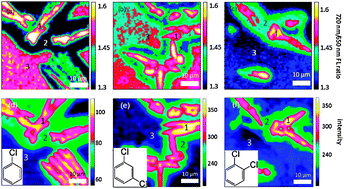Understanding of morphology evolution in local aggregates and neighboring regions for organic photovoltaics†
Abstract
Fluorescence intensity and its ratio mapping combined with time-dependent

* Corresponding authors
a
Center for Advanced Photovoltaics, Department of Electrical Engineering & Computer Science, South Dakota State University, Brookings, USA
E-mail:
Qiquan.Qiao@sdstate.edu
b Department of Chemistry, University of South Dakota, Vermillion, SD 57069
c Department of Mechanical Engineering, South Dakota State University, Brookings, USA
Fluorescence intensity and its ratio mapping combined with time-dependent

 Please wait while we load your content...
Something went wrong. Try again?
Please wait while we load your content...
Something went wrong. Try again?
Y. Xie, Y. Bao, J. Du, C. Jiang and Q. Qiao, Phys. Chem. Chem. Phys., 2012, 14, 10168 DOI: 10.1039/C2CP40503B
To request permission to reproduce material from this article, please go to the Copyright Clearance Center request page.
If you are an author contributing to an RSC publication, you do not need to request permission provided correct acknowledgement is given.
If you are the author of this article, you do not need to request permission to reproduce figures and diagrams provided correct acknowledgement is given. If you want to reproduce the whole article in a third-party publication (excluding your thesis/dissertation for which permission is not required) please go to the Copyright Clearance Center request page.
Read more about how to correctly acknowledge RSC content.
 Fetching data from CrossRef.
Fetching data from CrossRef.
This may take some time to load.
Loading related content
